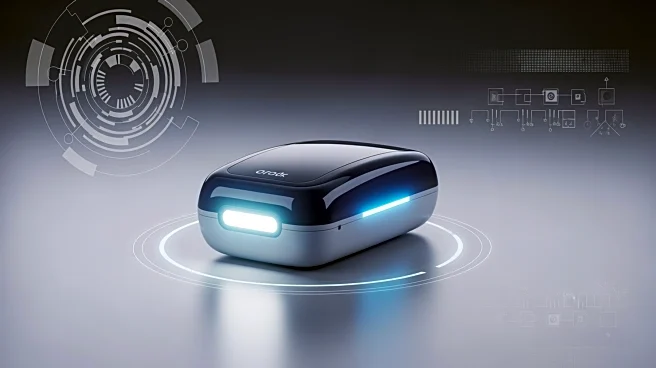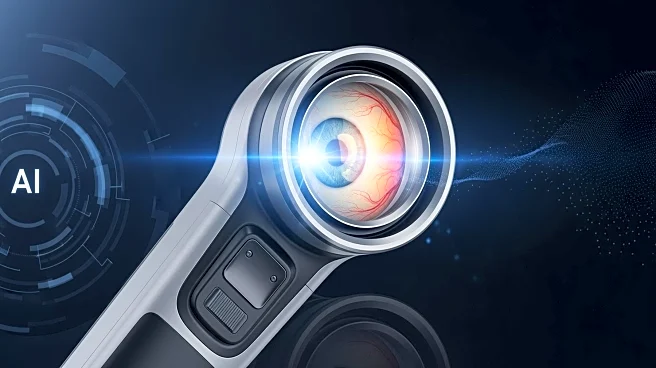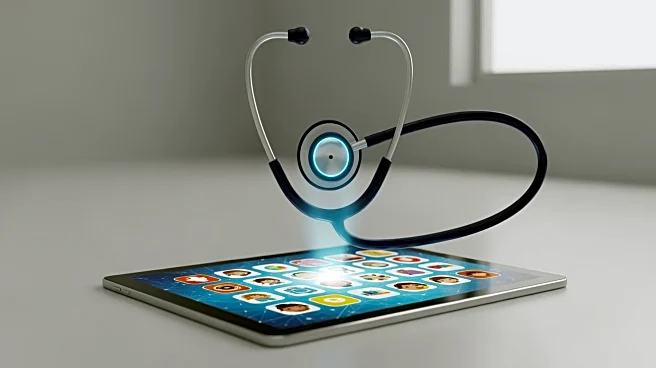What's Happening?
A new AI-powered portable device has been developed to improve the diagnosis of eye diseases using fundus images. The device integrates a high-resolution image capture module with an AI processing unit
capable of analyzing fundus images to detect diseases such as diabetic retinopathy and glaucoma. The system is designed to operate efficiently on resource-constrained devices, making it suitable for use in environments with limited resources. The device's AI model, based on EfficientNet-B0 architecture, provides high accuracy in disease detection while maintaining computational efficiency.
Why It's Important?
This development represents a significant advancement in the field of ophthalmology, particularly in improving access to eye care in underserved areas. By enabling on-device diagnosis, the system reduces the burden on specialized clinics and facilitates timely patient-centered treatment. The integration of AI in medical diagnostics can enhance the accuracy and speed of disease detection, potentially leading to better patient outcomes. The device's portability and efficiency make it a valuable tool for healthcare providers, especially in regions with limited access to advanced medical facilities.
Beyond the Headlines
The use of AI in medical diagnostics raises important ethical and regulatory considerations, including data privacy and the need for robust validation of AI models. Ensuring the accuracy and reliability of AI-driven diagnoses is crucial to gaining trust among healthcare professionals and patients. Additionally, the deployment of such technologies must consider the digital divide and ensure equitable access to these innovations across different socioeconomic groups. The development of this device highlights the potential for AI to transform healthcare delivery, but also underscores the need for careful implementation and oversight.











